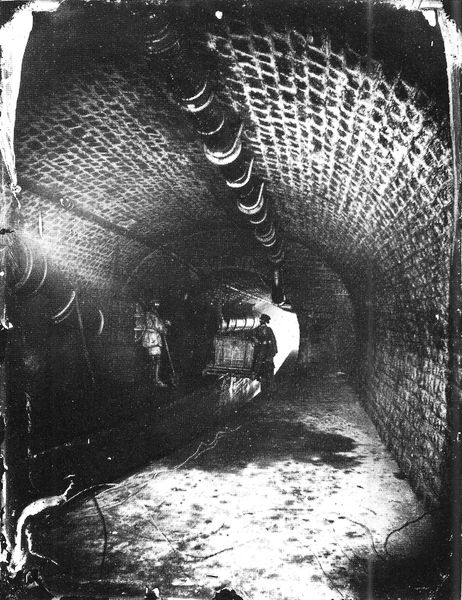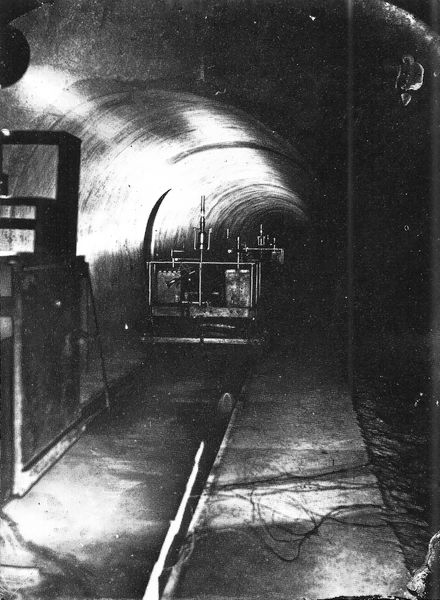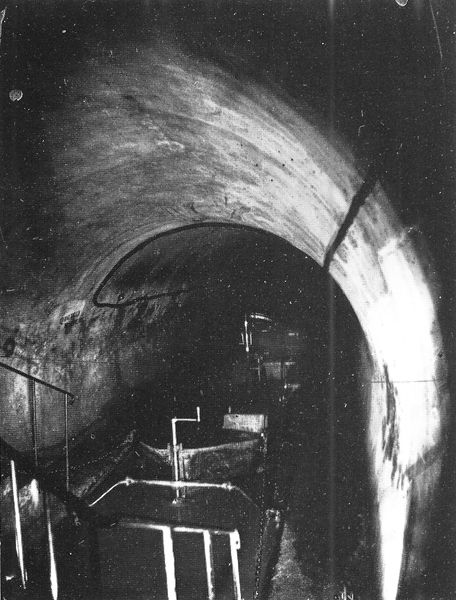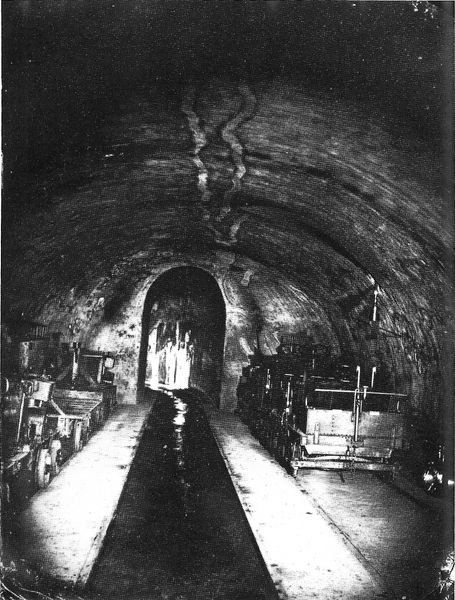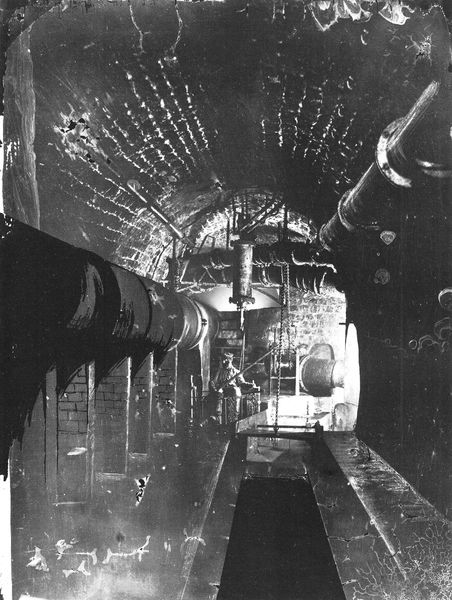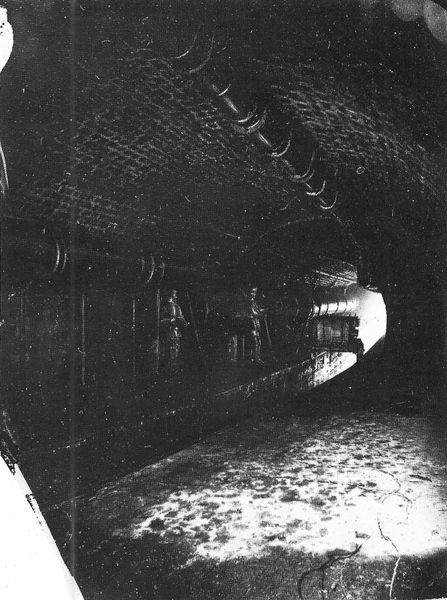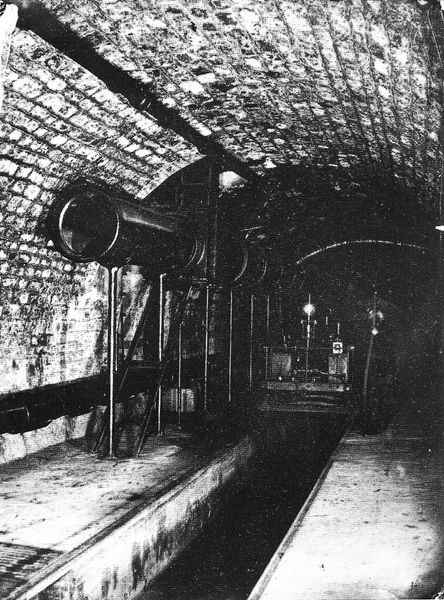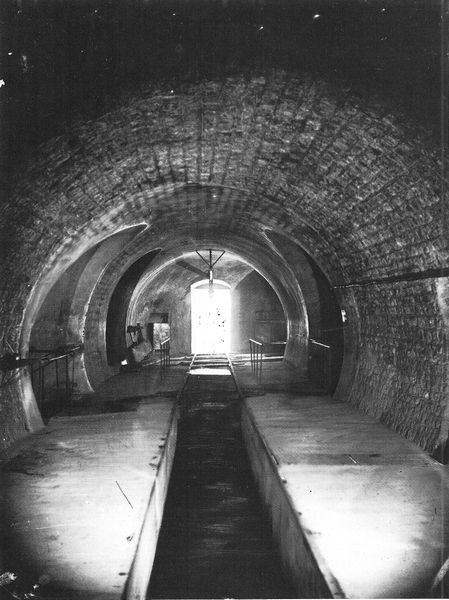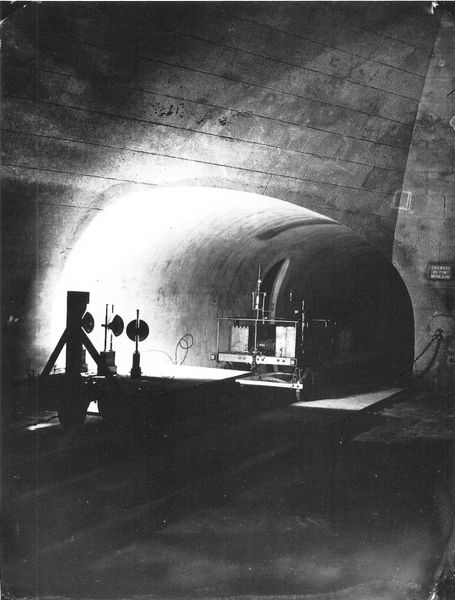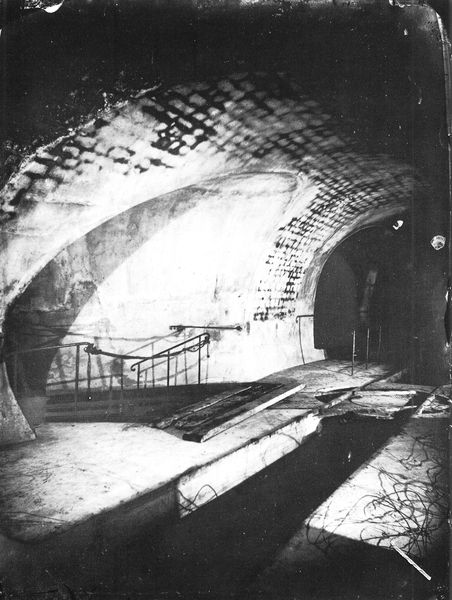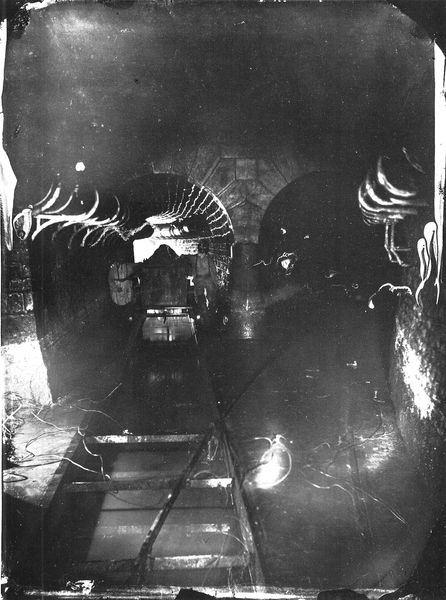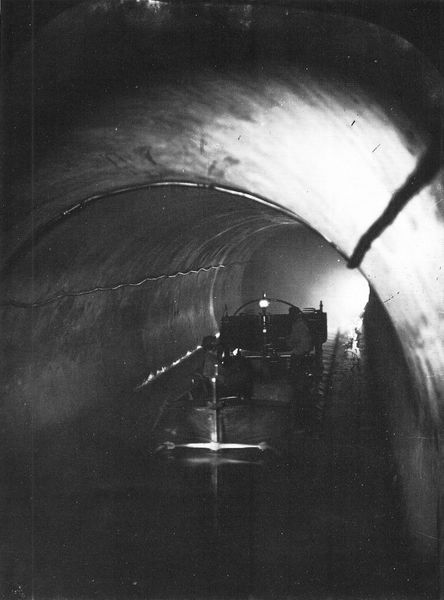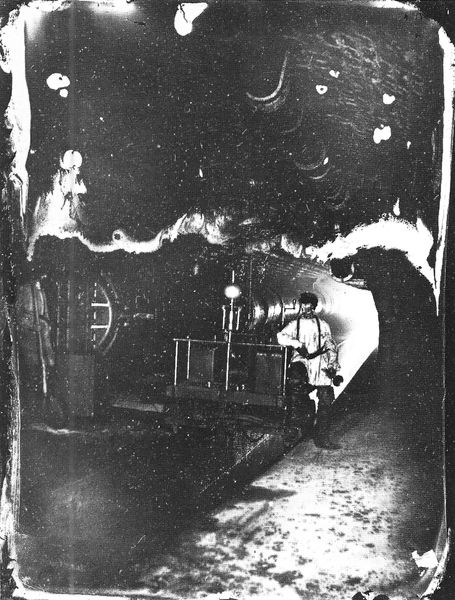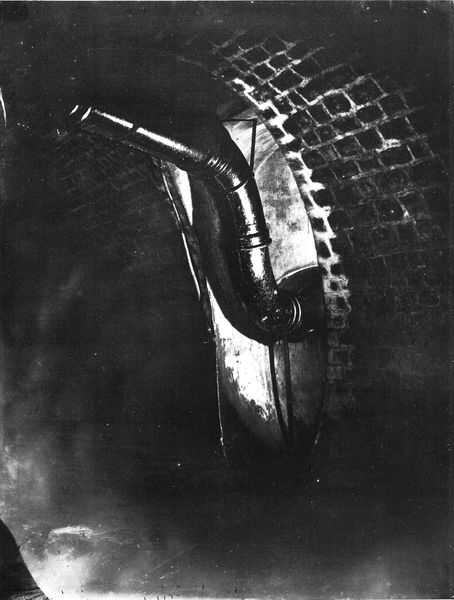
photography, gelatin-silver-print
#
street-photography
#
photography
#
gelatin-silver-print
#
monochrome photography
#
cityscape
#
monochrome
#
realism
#
monochrome
Copyright: Public domain
Curator: This stark image, simply titled "Égouts De Paris", transports us beneath the bustling city. Felix Nadar captured this gelatin silver print in 1861. The subject, of course, is the Parisian sewers. Editor: There's an almost oppressive feel to it, isn't there? The composition funnels your gaze into the dark recess, the brickwork looming like a ribcage. The contrast is extreme; those slick surfaces seem to swallow the light. Curator: Indeed. This image holds immense significance because, prior to this, the Parisian sewers were largely unexamined by the public. Nadar’s work here, technically challenging in the low light, served a vital civic function, bringing into view what was deliberately hidden. These photographs were intended to serve a progressive view, a feat of engineering to behold. Editor: And what strikes me is Nadar’s orchestration of space. The repeated arches create a rhythmic structure, punctuated by those thick pipes running overhead. Light and shadow are the actors here. The intense highlights feel almost otherworldly. It teases the mind and forces us to consider the subterranean architecture, the hidden skeleton of the city itself. Curator: Precisely. We must remember that these photographs appeared during Haussmann’s grand project of Parisian renovation. Here we have a representation of modernization – a picture of a future hidden beneath the present. It’s important to observe how these photos played a public role to promote new technological and sanitation capabilities. Editor: Ultimately, what remains for me is the aesthetic experience. I cannot help but be fixated on how light sculpts the surfaces in that stark, tonal gradient. Those light gradations are very powerful; their texture provides much interest in its monochromatic spectrum. Curator: For me, these early photographs reflect a burgeoning understanding of the possibilities afforded by photography, both for documentation and societal change. Nadar offers an insightful perspective into 19th-century progress. Editor: For me, this remains as a fascinating testament to photography’s power in abstraction. It is more than documentary work, as those contrasting relationships are of the visual architecture itself.
Comments
No comments
Be the first to comment and join the conversation on the ultimate creative platform.
